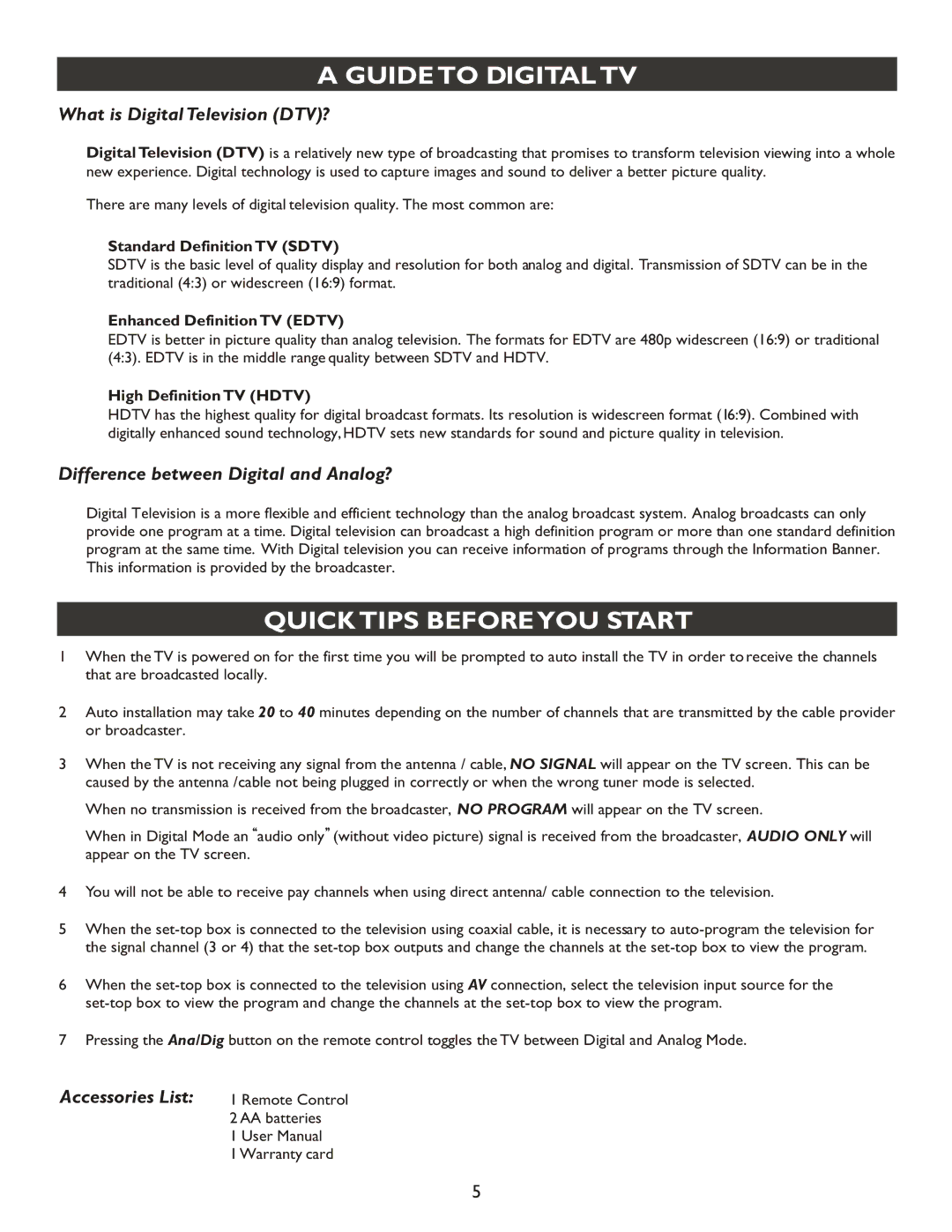
A GUIDE TO DIGITAL TV
What is Digital Television (DTV)?
Digital Television (DTV) is a relatively new type of broadcasting that promises to transform television viewing into a whole new experience. Digital technology is used to capture images and sound to deliver a better picture quality.
There are many levels of digital television quality. The most common are:
Standard Definition TV (SDTV)
SDTV is the basic level of quality display and resolution for both analog and digital. Transmission of SDTV can be in the traditional (4:3) or widescreen (16:9) format.
Enhanced Definition TV (EDTV)
EDTV is better in picture quality than analog television. The formats for EDTV are 480p widescreen (16:9) or traditional (4:3). EDTV is in the middle range quality between SDTV and HDTV.
High Definition TV (HDTV)
HDTV has the highest quality for digital broadcast formats. Its resolution is widescreen format (16:9). Combined with digitally enhanced sound technology, HDTV sets new standards for sound and picture quality in television.
Difference between Digital and Analog?
Digital Television is a more flexible and efficient technology than the analog broadcast system. Analog broadcasts can only provide one program at a time. Digital television can broadcast a high definition program or more than one standard definition program at the same time. With Digital television you can receive information of programs through the Information Banner. This information is provided by the broadcaster.
QUICK TIPS BEFORE YOU START
1When the TV is powered on for the first time you will be prompted to auto install the TV in order to receive the channels that are broadcasted locally.
2Auto installation may take 20 to 40 minutes depending on the number of channels that are transmitted by the cable provider or broadcaster.
3When the TV is not receiving any signal from the antenna / cable, NO SIGNAL will appear on the TV screen. This can be caused by the antenna /cable not being plugged in correctly or when the wrong tuner mode is selected.
When no transmission is received from the broadcaster, NO PROGRAM will appear on the TV screen.
,,
When in Digital Mode an ,,audio only (without video picture) signal is received from the broadcaster, AUDIO ONLY will appear on the TV screen.
4You will not be able to receive pay channels when using direct antenna/ cable connection to the television.
5When the
6When the
7Pressing the Ana/Dig button on the remote control toggles the TV between Digital and Analog Mode.
Accessories List: | 1 | Remote Control |
| 2 AA batteries | |
| 1 | User Manual |
| 1 Warranty card | |
5
